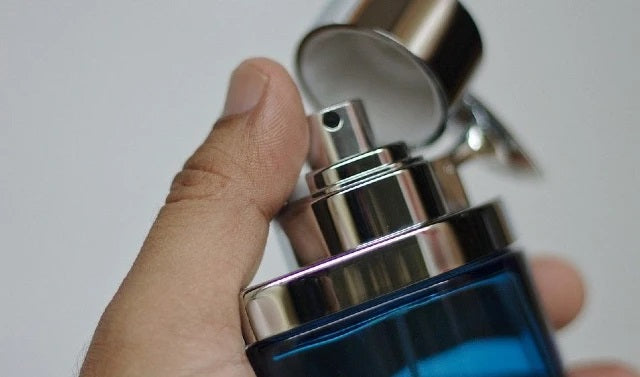Looking for that special fragrance that everyone will associate with you and come to recognize as your own unique scent? While there are a lot of fragrances on the market that smell good, looking for your signature scent can be a feat. To save you time and wasted cash, we’ve listed down a guide to help you find your signature scent that will stand out, turn heads and leave a lasting impression.
Notes
Scents are constructed on a ‘pyramid’ of notes split into three layers. On the very top of the pyramid are the top notes. These are the clean, citrusy, and fruity scents which are most apparent when you first spray on the fragrance. They’re also the ones that disappear the fastest, usually within 15 minutes.
In the middle of the triangle are the heart notes. These are generally green, herbal, floral, or spicy scents that become apparent as the top notes start to fade. They last longer than the top notes – generally for around half an hour.
At the bottom of the pyramid are the base notes. These are the underlying smells that form the foundation of the scent. They’re earthy smells such as vanillas, chocolates, woods, and musks. They are usually the most prominent and last the longest (anywhere between two hours and a whole day).
Seasonality
Not all scents perform well for all seasons. The rule of thumb is to wear something heavy during fall and winter such as oriental and woody. For warmer days, consider more herbal, floral scents, green, and citrus fragrances.
Scent Families
The basic fragrance families are oriental, woody, green herbal, floral, citrus, water, and fruity. Oriental and woody are traditionally heavier, designated to “cold-weather” seasons.
Oriental: usually refers to notes of amber, vanilla, musk, or various spices.
Woody: anything that evokes the forest and its damp earthiness: Patchouli, cedarwood, sandalwood, moss, vetiver, and more.
Green: As opposed to woody, “green” is more like the freshness of a jungle or sprawling field of fresh-cut grass.
Herbal: Also referred to as “aromatic: Lavender, rosemary, mint, thyme, etc.
Floral: Commonly found in top and heart notes; Rose, rosewater, ylang-ylang, lilies, etc.
Citrus: Neroli, bitter orange, and grapefruit are common top notes. Bergamot, a type of orange, is a popular base note thanks to its peel’s sweet, fresh, and ripe qualities.
Water: any scent that evokes a day on the ocean, or a humid night just before the sky cracks with rain.
Fruity: Any fruits fall here, aside from the citruses. Think fresh peaches and wild berries.
Ask Good-Smelling People
Ask other good-smelling people what they’re wearing—and why. While a scent that works for someone may not necessarily have the same effect on you, you might get information or two about how they found their signature scent such as a department store with a particularly well-informed employee who is willing to help you try a few scents.
If someone wears a scent that you really like, ask about it. Test it on yourself. If it works, it could be the signature scent you are looking for. Just make sure it’s not from someone you work with or see every day.
Try Before You Buy
Visit the store. There’s no alternative to going to a shop and actually trying out scents yourself. Go in the morning and spray some scents on those little pieces of cards lying around. Your sense of smell can only process a limited number of scents before everything starts smelling the same so try 5 scents on tester cards and pick the 2 that appealed to you most. Spray these 2 on your skin, one on each wrist. Now leave the shop and go about your day. Observe how the two scents evolve as the day progresses. You might get lucky and find your signature scent on the first try. If not, keep trying out fragrances until you find a scent you really love.
Versions
You finally found the scent you love. The next step would be picking the version of that scent that will meet your requirements. There can be up to seven different versions of the same scent, differing on the concentration of perfume oils. The higher the concentration of perfume oils, the stronger, long-lasting, and pricier the scent will be
An Eau Fraiche is the weakest version of the fragrance and usually only lasts for up to an hour.
Eau de Cologne is typically composed of 2-4% perfume oils in alcohol and water and will last for about two hours.
Eau de Toilette is 5-15% strength and will generally last for around three hours.
Perfume contains around 15-20% pure perfume essence and lasts for anything between four and eight hours.
Parfum, not to be confused with perfume, is the strongest (and therefore the most expensive) version of a fragrance – it’s about 20-30% pure essence – and can last for an entire day. It has an oily feel because of how pure it is.
We’d recommend Eau de Toilette or Perfume as they offer the best balance of strength of value. They last for a good amount of time and smell strong without being overpowering. Don’t just take our word for it, try it for yourself before making a purchase. It’s your signature scent after all.

